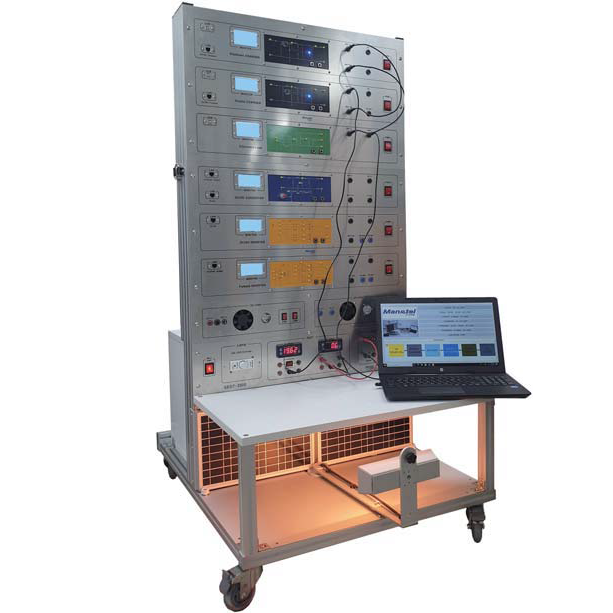Features of the Solar Energy Generation Trainer:
1. By modularizing the light source, charge controller, converter, inverter, and load, easily understand the structure of the power generation system
2. The device tests the principle of renewable energy generation indoors
3. Each module is controlled by computer
4. The test pins of each module are installed so that the circuit characteristics can be measured
5. The light source has a structure that can control the angle of incidence of light
6. Check the power energy change of the solar panel according to the incident angle of the light source
7. Solar panels are connected in series and parallel
8. When the polarity is changed when connecting the module to the module, a warning sound is generated with a buzzer sound.
9. Practical textbooks are written in the order of purpose of practice, theory, practice, and practice report for each chapter
10. Each module can be practiced using battery power
11. The power efficiency of each module is displayed in the GUI in real time
12. Able to design a custom power generation system for each application.
Functions of the Solar Energy Generation Trainer:
1. Understanding the structure and concept of a solar power system
2. Understand and design the power conversion process
3. Understanding the structure and principle of various inverters and converters
4. Able to compare and analyze the efficiency change according to the incident angle of the light source
5. Solar cells can be connected in series and in parallel, allowing for capacity expansion experiments
6. Real-time system control practice using microprocessor possible

